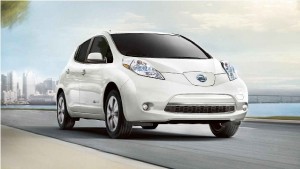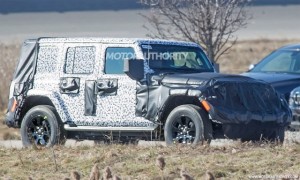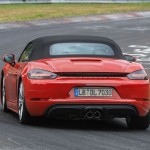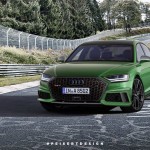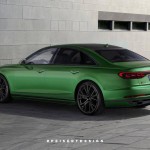Daily Archives: July 22, 2017
The 2018 Nissan Leaf Will Get The E-Pedal
The 2018 Nissan Leaf will be the Japanese automaker’s main electric vehicle offering. As it gets ready to debut for its second generation, Nissan continues to improve it with technology currently being made available in the market. One such technology is the E-Pedal.
But before that, let’s look back at what we know so far. Teases from Nissan showed that the new Leaf will have a refreshed pair of headlights and an upgraded grille. Based on the spy shots gathered, this upcoming model will be more attractive aesthetically compared to the current generation out in the market.
A video also featured the Leaf’s use of the brand’s ProPilot, the semi-autonomous driving system that this new generation will come packaged with. And speaking of autonomous driving, it came as no surprise that Nissan is fitting the 2018 Nissan Leaf with the E-Pedal, which you will either love or hate.
Basically, the E-Pedal is a single-pedal system, which can automatically accelerate or brake depending on the driver’s foot position. When accelerating, there isn’t much difference because it functions just like any ordinary accelerator pedal. What it does after you lift your foot from the pedal is what differentiates it.
As the driver lifts his foot from the accelerator, the car will automatically slow down and will come to a full stop when the foot is completely off the pedal. This will work even when you are on a hill or in a “hanging” position. The commands will be based on the position of your foot on the E-Pedal.
This sounds promising, of course, when you think about the concept of autonomous driving. Drivers, however, will have to get used to having a single-pedal system, though this may backfire to Nissan. It is highly doubtful if people will trust this E-Pedal system enough, or if they will even open up to the idea of using it.
The 3 Power Options For The New Jeep Wrangler
The new JL-series Wrangler will be introduced in November 2017 at the Los Angeles Auto Show, and is expected to be in dealerships by December of the same year. This 2018 Jeep Wrangler model will have three new power options customers can choose from, including a diesel engine that will surely be the favorite for so many.
Fiat Chrysler Automobiles held a meeting with select Jeep dealers this week for the new model, making the information about the three powertrains available for us.
1. Inline-4 Engine
During the launch in November 2017, there will be two powertrain options instantly available for customers. The standard option will be a 2.0-liter turbocharged inline-4 engine, which has already been confirmed as early as last year. Reports and estimations indicate that the engine will be able to produce as much as 300 horses. It will be paired with an 8-speed automatic transmission.
2. V-6 Engine
The second power option in the launch would be an upgraded version of the 3.6-liter V-6 engine, which is in the current Jeep Wrangler. It has an output of 285 horsepower, but that would be significantly boosted in the 2019 Jeep Wrangler. Those who will prefer the V-6 engine can pair it up with either a manual or automatic transmission, though the automatic one would probably the choice for most drivers.
3. Diesel Engine
Finally, the most important tidbit of information we got is that the third powertrain option would be a diesel engine. This would be introduced in 2019 the earliest, but there could be a couple of adjustments because the diesel option in discussion is the 3.0-liter turbocharged V-6 that FCA has been having trouble with because of emissions. There are also some rumors that the DEF (Diesel Exhaust Fluid) tanks, which were used to reduce nitrogen oxides in diesel vehicles, would be fitted in the new Wrangler.
There are no news yet on how many horses the diesel engine can produce for the Wrangler, but if it’s any indication, the Jeep Grand Cherokee had 240 horsepower. It will be possibly paired with an automatic transmission.
Spy Shots
Check out the spy shots of the 2018 Jeep Wrangler taken by Motor Authority in the gallery below:
Top 3 Things About the 2018 Porsche 718 Boxster GTS
These spy shots of the 2018 Porsche 718 Boxster GTS are showing us how the German luxury automaker is gearing up for its next high-performance sports car. The prototype of the 718 Boxster GTS was shrouded in camouflage, though that didn’t stop us from imagining what it could look like.
1. Exterior
The standard 718 Boxster looks slightly different from the GTS version of the same model. The prototype we have seen, however, seems to be a little sportier and more aggressive than the regular 718 Boxster. Obviously, the prototype is packing a new front fascia with an A-wing design that looks very similar to the 918 Spyder hypercar. Below the front fascia, you can find a new lip spoiler.
2. Powertrain
The Boxster S and the previous Boxster GTS have the same engine, though the one fitted on the GTS is slightly more powerful. Porsche will most likely apply the same principle on the 718 Boxster GTS, which means a 2.5-liter turbocharged flat-4 engine that would be placed behind the cabin instead of under the hood.
The engine will have an output of 365 to 375 horsepower, a slight upgrade from the 350 horses produced by the 718 Boxster S.
There is also an option for a top-end chassis—standard Sport Chrono and Porsche Active Suspension Management.
3. Release date
The car might be introduced sometime in 2018 with the 718 Cayman GTS. But remember, the 718 Boxster won’t be the best in the 718 range because the Boxster Spyder and Cayman GT4 are expected to make their own debuts. Both will sport the naturally aspirated flat-6 engines.
Spy Shots
Check out the spy photos of the 2018 Porsche 718 Boxster GTS in the gallery below:
4 Things We Can Expect From The First Ever 2018 Audi RS8
Since the RS-badged Audi came out in the 1990s, people have been clamoring for a high-performance version of its A8. But until now, we have yet to see an RS8 model, which can compete with the likes of the AMG S63, the S65, and the BMW M7.
Without the RS model, Audi would be left behind by its competition in the market. Hopefully, the brand is tired of trailing behind BMW and Mercedes-Benz, and would eventually work on their RS-badged A8. Above are renderings of what the Audi RS8 could look like when and if it’s launched in 2018.
1. Exterior
There is no hint whatsoever about how the styling of the RS8 would look like, but it’s safe to assume that the appearance and design of the RS8 would be very similar with other RS-badged vehicles. The A8 would still be the basis for how the RS8 would look like, although the latter would have a more aggressive front and rear fascias. The grille would have a honeycomb mesh with the RS8 badge, of course, and the headlamps will get black vents on the edges.
Both the bumper and the side vents will have a sportier styling. Except for the double-five spoke wheels in black chrome, there is not much change on the sides.
2. Interior
The Audi A8 sports a newer continuous air vent design with a simplistic and clutter-free instrument panel. The cabin will have horizontal lines all over that would give it a wider look with a cleaner and smoother surface on the center. The RS8 will follow this styling, though it would be sportier, of course. Audi would probably use darker colors for the RS model.
The tech package would include the Apple CarPlay, Android Auto, the new AI traffic jam pilot, and a remote parking system.
3. Drivetrain
It’s hard to think about what will power the Audi RS8, but expect the automaker to come after something that could give the high-performance vehicle an output of at least 620 horses. This would make it compete with the Mercedes-AMG S63 and the BMW M760Li. Hopefully, Audi can go more than 620.
4. Prices
The RS8 will cost more than the outgoing S8 Plus, that’s for sure. That means on the upward trend of $114,900.

